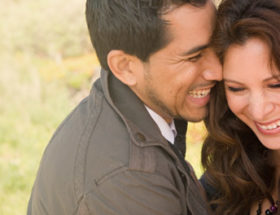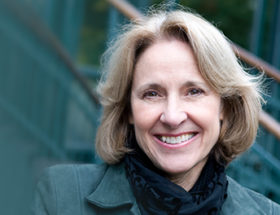Showing your love can be tricky sometimes. Have a look at our top tips for how (and how not to) woo your partner.
One of F. Scott Fitzgerald’s most enduring quotes reads ”they slipped briskly into an intimacy from which they never recovered.”¹ It’s a romantic thought, but can intimacy ever be created so quickly? Surely these things take time? Actually, according to psychologist Arthur Aron, brisk is just fine. In fact, it might only take 36 questions to fall in love.
What are the 36 questions to fall in love?
Since gaining viral fame in a New York Times Modern Love column, psychologist Dr. Arthur Aron’s 36 questions to fall in love have been the subject of headline after headline. The popularity of the 36 questions is mostly due to one startling claim: those who’ve tried the questions say that using them with a date (or even a friend) can help foster intimacy and – perhaps – lead to love.
So what are the 36 questions, exactly? In a nutshell, they are set of 36 specific queries designed to bring you and a partner closer together by discovering what makes each other tick. The questions are broken into three groups and, as you move through the sets, the questions become increasingly more probing – starting with gentle prompts like ”what would constitute a perfect day for you?” and moving through to very personal enquiries like ”Of all the people in your family, whose death would you find most disturbing? Why?”
By combining the full questionnaire with 2-4 minute session of quietly gazing into each other’s eyes, researchers say a couple can create feelings of mutual vulnerability and disclosure – feelings that can create a shortcut to emotional intimacy.
Where did the questions come from?
To the casual observer, 2015 was the year of the 36 questions, with everyone from the New York Times to Buzzfeed to The Guardian newspaper publishing think pieces on the topic. But the questionnaire is much older than that – nearly 20 years older in fact!
The man behind the 36 questions to fall in love, social psychology researcher Dr. Arthur Aron, first published on the subject in 1997. His paper, The Experimental Generation of Interpersonal Closeness, was based on nearly 30 years of research into love, conducted alongside his wife and scientific collaborator, psychologist Dr. Elaine Aron.
I fell deeply in love with Elaine Aron, my long term partner and collaborator. I looked around and there was almost no research on love. So I said, ‘there’s my topic’.
Arthur Aron, talking to Hack magazine2
Together, the Arons decided to study closeness between people, aiming to find out what exactly it is that binds us. They decided to see if they could create a situation where two strangers would be encouraged to share intimacies, starting innocuously to ensure everyone’s comfort, and building to a really personal finale to create feelings of trust and connection. And so, the 36 questions were born.
Although they’re often referred to as ‘the 36 questions to fall in love’, The Arons believe that they are more about creating a deep emotional connection rather than real love. However, not all their subjects agree: in fact, the very first couple to try the questions – a pair of research assistants in the Arons’ lab – ended up falling in love and getting married six months later!
Do the 36 questions work outside of the lab?
Since their laboratory beginnings, the 36 questions have made it to a wider audience. One of the major catalysts was the New York Times Modern Love column cited above. In it, Vancouverite, academic, and author Mandy Len Catron details her experience trying the questions out on a first date with a guy from her climbing gym.
Her experiences? Strange, exhilarating and, overwhelmingly, positive. She talks about how the format of the questions helped guide her and her date into a place of ‘’accelerated intimacy’’3 so naturally that she barely questioned it:
The questions reminded me of the infamous boiling frog experiment in which the frog doesn’t feel the water getting hotter until it’s too late. With us, because the level of vulnerability increased gradually, I didn’t notice we had entered intimate territory until we were already there, a process that can typically take weeks or months.
Mandy Len Catron, To Fall in Love With Anyone, Do This
Later, after they came out of the intimacy bubble brought on by the questions, the couple proceeded to a nearby bridge to try out the second part of the experience: gazing into one another’s eyes for four minutes. Len Catron says that ‘’I’ve skied steep slopes and hung from a rock face by a short length of rope, but staring into someone’s eyes for four silent minutes was one of the more thrilling and terrifying experiences of my life.’’
Like many people who give it a whirl, Len Catron and her partner felt an almost instant connection after trying the 36 questions experiment. But was that bond built to last? Well, reader, she married him. Today, she spends her time climbing mountains with her now-husband and writing about love – her book How to Fall in Love with Anyone comes out this month.
How do I take the 36 questions to love?
Ultimately of course, there’s only one way to discover if the 36 questions can help you fall in love at first sight – and that’s to put them to the test yourself.
To try them, sit down with someone you’d like to know better (this can be a stranger, a friend, even a marriage partner), and take turns answering each question. Make sure you set aside some quiet time to really get truthful – the questions will normally take anywhere from 45 to 90 minutes to complete fully. And don’t forget to finish with gazing into each others’ eyes: around four minutes is perfect.
The 36 questions
Set I
1. Given the choice of anyone in the world, whom would you want as a dinner guest?
2. Would you like to be famous? In what way?
3. Before making a telephone call, do you ever rehearse what you are going to say? Why?
4. What would constitute a “perfect” day for you?
5. When did you last sing to yourself? To someone else?
6. If you were able to live to the age of 90 and retain either the mind or body of a 30-year-old for the last 60 years of your life, which would you want?
7. Do you have a secret hunch about how you will die?
8. Name three things you and your partner appear to have in common.
9. For what in your life do you feel most grateful?
10. If you could change anything about the way you were raised, what would it be?
11. Take four minutes and tell your partner your life story in as much detail as possible.
12. If you could wake up tomorrow having gained any one quality or ability, what would it be?
Set II
13. If a crystal ball could tell you the truth about yourself, your life, the future or anything else, what would you want to know?
14. Is there something that you’ve dreamed of doing for a long time? Why haven’t you done it?
15. What is the greatest accomplishment of your life?
16. What do you value most in a friendship?
17. What is your most treasured memory?
18. What is your most terrible memory?
19. If you knew that in one year you would die suddenly, would you change anything about the way you are now living? Why?
20. What does friendship mean to you?
21. What roles do love and affection play in your life?
22. Alternate sharing something you consider a positive characteristic of your partner. Share a total of five items.
23. How close and warm is your family? Do you feel your childhood was happier than most other people’s?
24. How do you feel about your relationship with your mother?
Set III
25. Make three true “we” statements each. For instance, “We are both in this room feeling … “
26. Complete this sentence: “I wish I had someone with whom I could share … “
27. If you were going to become a close friend with your partner, please share what would be important for him or her to know.
28. Tell your partner what you like about them; be very honest this time, saying things that you might not say to someone you’ve just met.
29. Share with your partner an embarrassing moment in your life.
30. When did you last cry in front of another person? By yourself?
31. Tell your partner something that you like about them already.
32. What, if anything, is too serious to be joked about?
33. If you were to die this evening with no opportunity to communicate with anyone, what would you most regret not having told someone? Why haven’t you told them yet?
34. Your house, containing everything you own, catches fire. After saving your loved ones and pets, you have time to safely make a final dash to save any one item. What would it be? Why?
35. Of all the people in your family, whose death would you find most disturbing? Why?
36. Share a personal problem and ask your partner’s advice on how he or she might handle it. Also, ask your partner to reflect back to you how you seem to be feeling about the problem you have chosen.
EliteSingles editorial September 2017
Have you tried the 36 questions to love? Or would you like to know more? Get in touch! You can comment below or email us at [email protected]
Sources:
1 F Scott Fitzgerald, This Side of Paradise. Published by Scribner, March 26, 1920
2 Ange McCormack and Sarah McVeigh, writing for ABC’s Hack, March 2017. Behind the famous ‘36 questions that lead to love.’ Found at http://www.abc.net.au/triplej/programs/hack/the-36-questions-that-lead-to-love/8387736
3 Mandy Len Catron, writing for the New York Times, Jan 2015. To Fall in Love With Anyone, Do This (Updated With Podcast). Found at https://www.nytimes.com/2015/01/11/fashion/modern-love-to-fall-in-love-with-anyone-do-this.html



